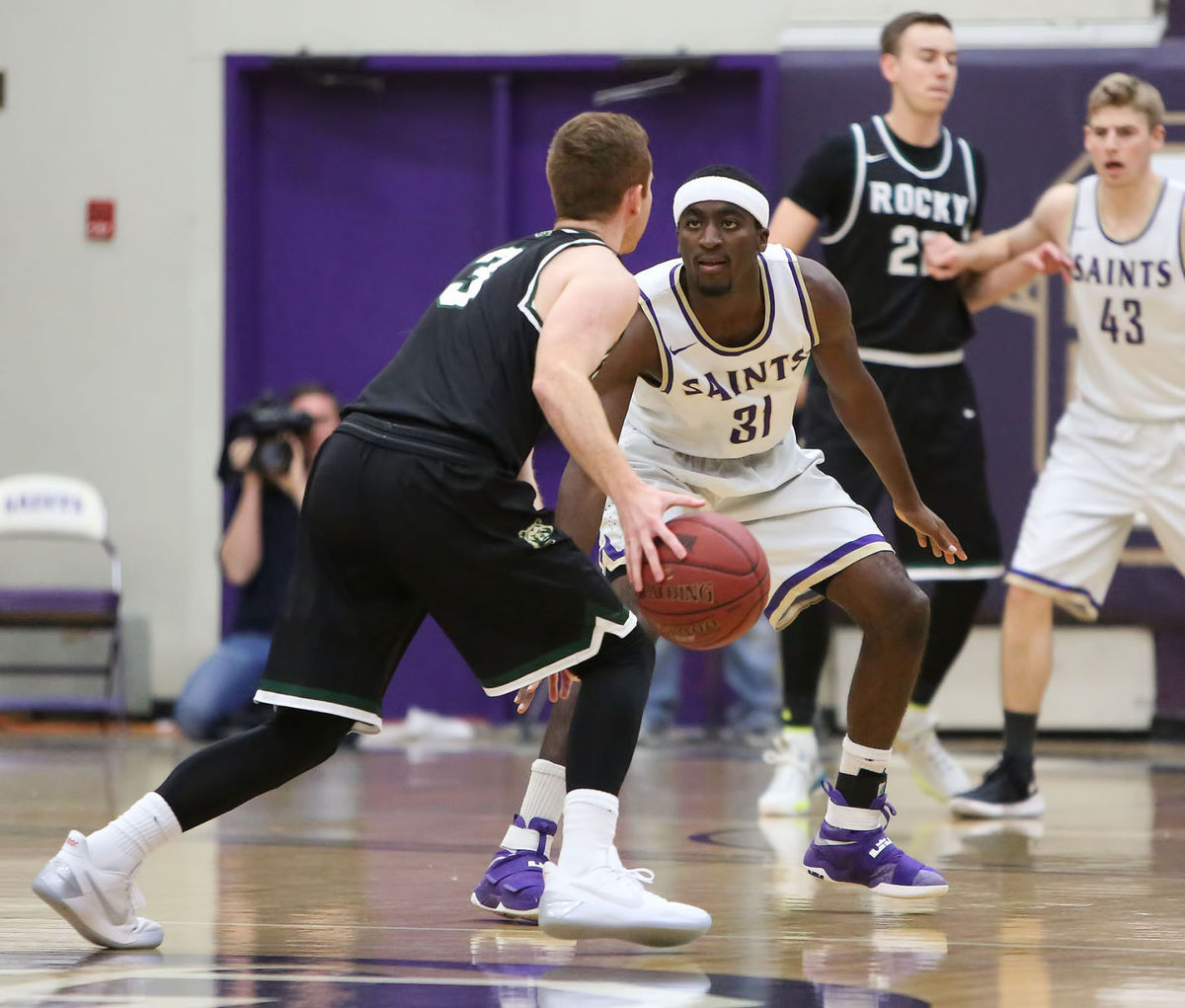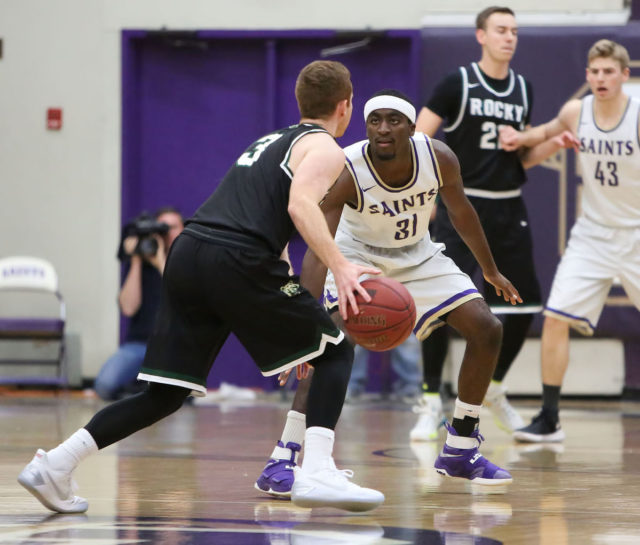 You won’t find many, if any, who question Ife Kalejaiye’s fortitude.
You won’t find many, if any, who question Ife Kalejaiye’s fortitude.
Night in and out for the Saints, the 168-pound sophomore guard will draw the opposition’s most adept wing player, usually one averaging 15 or more points an evening. The executive order, Kalejaiye says, will be to take that player and hold him to 10 or fewer points, limiting the player in such a way that the rest of his team can be successful. It can be a fool’s errand in an ever-evolving basketball game that craves offensive producers akin the Steph Curry’s of the NBA and the Lonzo Ball’s of the NCAA — guards who seemingly have limitless range and cause fans to salivate at the thought of their explosiveness. Many players want to be gunners, chasing blueprints laid out by their amateur and professional idols.
Kalejaiye is old-school in that regard. He wants to lock fellas like that up.
“Ife loves to play defense and get stops, and he’s really good at it,” Carson Cunningham said. “On offense, he’s a dangerous shooter and can slash. He also is a very mature and bright person. So he knows what we’re looking for in possessions and is willing to play any role to facilitate that. This is huge. His smarts, his maturity and his athletic abilities and ball skill help make him a tremendous asset to the team.”
It’s a mentality born through brotherhood. His older brother, Dara, grew his own reputation leading up to his high school days as a lockdown defender. Ife knew teams would always need a solid defender and through his brother it became desirable.
“Offense is cool, but being able to lock up your man when your teammates rely on you to hopefully hold other team’s best player to 10 or less that’s something that any team needs,” he said.
But that’s not the full reason Kalejaiye exudes toughness.
When Kalejaiye’s groin malfunctioned, tearing during a low-impact drill, he didn’t miss much court time.
He played his entire senior season of high school ball with a torn groin.
* * *
The summer before his senior season, Kalejaiye felt a twinge. He was executing a three-man weave, a drill designed to pass and move, creating a feeling of floor spacing without the need to dribble. Kalejaiye ignored the pain for three months, until it became unbearable.
“I couldn’t jump. I couldn’t slide. I couldn’t do the things I was used to doing,” Kalejaiye said.
He didn’t want to miss his senior season of basketball, so he worked himself into game shape, “popped pain medication,” — “stopped doing that quickly,” he added — and played the year out. Kalejayie played at Cathedral High School, a program whose coach also operated a strong AAU team, the Compton Magic, in California. Year-round, hoops were at the forefront of what Kalejaiye did. He knew playing college basketball would be a dream come true. His coach, William Middlebrooks, made it a priority to get players exposure.
Kalejaiye couldn’t squander that.
Injury be damned, Kalejaiye played. His quickness betrayed him and made him rely more on his shooting, which he said really developed as a result. He became less of a slasher and more of a shooter.
Still, the groin needed to heal.
Carroll had shown interest in Kalejaiye during his senior season, but he would have to be 100 percent. Middlebrooks also told Kalejaiye he would need to gain weight and prove to college coaches he could stay fully healthy over the course of a season.
An eight-month recuperation supplemented with weight-training meant one thing: Kalejaiye would take a year of preparation.
His family — parents Dipo and Nony and siblings Dara, Ebun and Laolu — as well as his coaches supported his decision, as long as he fully committed to it. “Everybody was on board,” Kalejaiye said.
Prep years can range from physical improvement, to retaking high school courses to improve GPA, to improving SAT or ACT scores or even working.
Kalejaiye worked and healed.
He would work at the church where his parents pastored, International Christian Center, as a clerk. Dipo had a PhD in law and his mother a doctor of dental surgery before becoming full-time pastors. The family had brought Ife to the states from Nigeria when he was two months old, in 1996, leaving him with a yearning to understand Nigeria, “I want to go back eventually and see what it’s like.”
Kalejaiye worked and played basketball with other area players who also prepped for college.
The Saints maintained contact with Kalejaiye, and helped him realize his dream. Kalejaiye would go to Carroll to play basketball, a program he thought at the time as “on the rise,” and had an academic profile he wanted.
Courtesy: CARROLL COLLEGE







